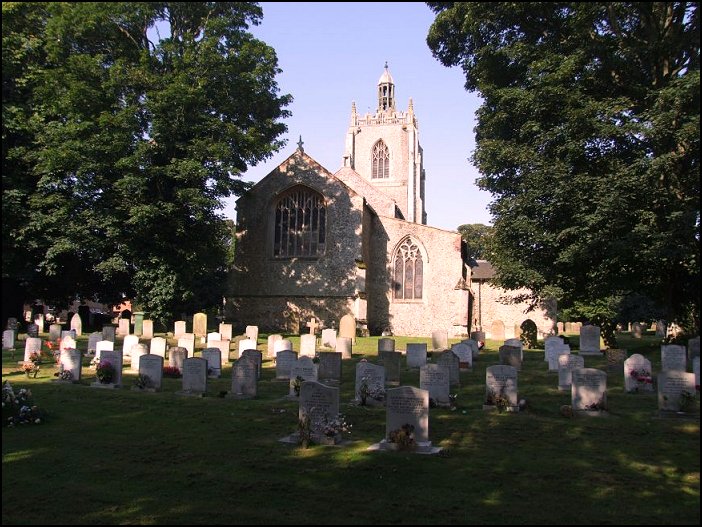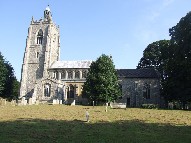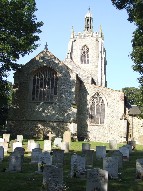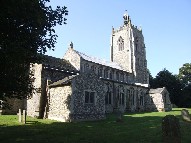
Beeston-next-Mileham Little Dunham Necton Wellingham
home I index I introductions I e-mail I about this site
All Saints, Necton

Read
the captions by hovering over the images, and click on them to
see them enlarged.



All
Saints, Necton
We were all fortified by our hearty lunch, and perhaps happy to stroll about in the fresh air pondering the provenance of a vast stone coffin lid that has been placed on a tombchest in the graveyard. But the pleasant churchwarden came with the key, and so we all piled inside. Necton is exactly the kind of vast church I used to be sniffy about. Although it is not without lots of medieval survivals, the whole lot has been restored so extensively and with such good taste that the building speaks more of the aesthetics of 19th and 20th century Anglican triumphalism than it does of its remote past. It is as if everything before, say, 1870 has been tamed and transformed, pushed into the service of the Anglican project. Now I see reason for this not to happen, for as Terence Smith says of Bradfield St Clare in Suffolk, to look into this church today is to look into a mirror of the Church of England. Here are almost the last vestiges of the Old Faith cleared away, and the depredations of the Puritans made good - decent at least. It is like looking into the face of the Elizabethan settlement. And a better description hasn't been written of a uniquely Anglican aesthetic that I have read. The triumph in the mix here is the view upwards and eastwards; a typical East Anglian angel hammerbeam roof in all its painted glory, with Saints in the pedestals and angels on the beam ends, leads the eye to the window that backlit the rood in Catholic days. This is similar to the one at nearby Beeston, but this one has now filled in, and is very curious; a central pedestal is empty, but flanking niches hold four figures. Now, Mortlock suggests that the pedestal once held a Christ in Glory, but I do not think this can be right. Perhaps it held the crucifix, and the lower two flanking figures were Mary and John. But the more I looked at it, the more I became convinced that the whole thing is a Victorian confection. And the chancel arch, too, I think is Victorian. You'd even think that perhaps there never was a window at all, if it wasn't for the fact you can see it from the outside as well. I came back to Necton for the first time some four years later, in the summer of 2007. All Saints was waiting, as stately and magnificent as it had been before, as triumphant as Anglicanism was when its glory was restored. These days, the parish keep the church open in daylight hours, and so you can step straight into the great west door under the tower - All Saints is one of the few Norfolk churches which have no way in from south or north, the two porches having been converted into a chapel and a vestry respectively. You step through this space into the well-kept vastness, a harmonious interior that is at once vernacular and urban. Simon Knott, November 2004, updated October 2007 You can also read: With Giants around Swaffham |
Beeston-next-Mileham Little Dunham Necton Wellingham
Amazon commission helps cover the running costs of this site.
home I index I latest I introductions I e-mail I about this site I glossary
links I small
print I www.simonknott.co.uk I www.suffolkchurches.co.uk
ruined churches I desktop backgrounds I round tower churches